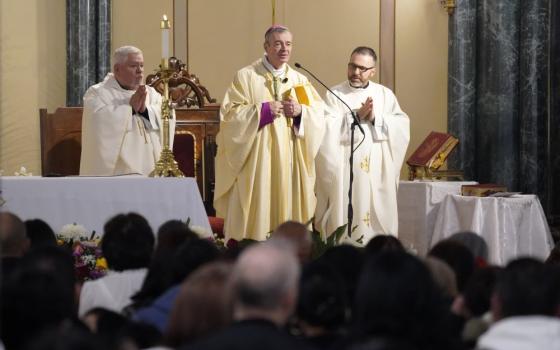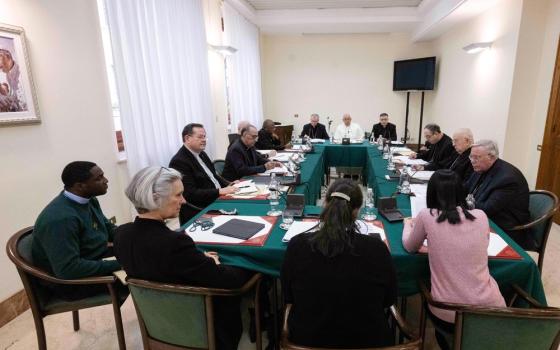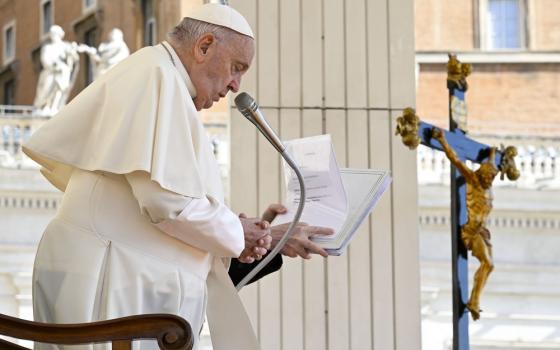When Fr. Thomas Berry exhorted us to put the Bible on the shelf for about 20 years, Berry was not showing disrespect to the scripture, but rather trying to get us to see, before it’s too late, that God’s revelation is also in our midst. The world is not an expendable backdrop to some remote salvation drama. God is here and now. Every bush is burning. God has been at work for billions of years everywhere in the processes of creation that are still going on.
Religious fundamentalism plagues the world, and its tenets across the religious spectrum include a core belief that the planet and the non-human world are secondary to a salvation drama with the human spirit at center stage. Our material world is nothing more than stage scenery to be struck when the drama is played out. The vast universe with its hundreds of billions of galaxies is part of that stage scenery.
Another pervasive religious view, contrary to fundamentalism, denies the world in a different way. New Age spirituality often posits a kind of idealism wherein, it is said, we “create” our own reality and can alter outcomes in the real world by changing the way we habitually think. “Our field of energy,” states Shirley MacLaine, “organizes the molecular structure that we perceive, both within and without, as physical reality.” Again, the world around us is secondary to our own inner spiritual strivings and will.
One other religious view has emerged, counter to both New Age and fundamentalist, and it holds that creation, just as it presents itself to us, is the means by which God both creates and communicates to us. “By means of all created things,” said Fr. Pierre Teilhard de Chardin, “the divine assails us, penetrates us, molds us. We imagined it as distant and inaccessible, whereas in fact we live steeped in its burning layers.”
“The task of the saints of the 21st century,” says Fr. Ed Hays, “will be to find God in the ten thousand things of creation.” As a corollary, the task of religious studies will be to update religion in light of what science has been telling us about creation: how it unfolds, how it produced us. Fr. Thomas Berry called himself a "geologian" rather than a "theologian," noting that the natural world's revelation is the oldest and richest source of information about God.
There is a place for the geologians right alongside the theologians.
In 1974, a young woman wrote a book for which she won the Pulitzer Prize. For many, particularly those interested in both the natural world and in religious searching, Pilgrim at Tinker Creek was one of those reading experiences that helped illumine and shape our lives.
In this book author Annie Dillard chronicles one year spent exploring her own backyard and the nearby woods in rural Virginia. She followed the seasons, investigating winter, spring, summer and fall, down on her hands and knees, up and about late at night. Her descriptions of a praying mantis eating her mate during sex, or a tree filled with natural lights, or a water bug eating a frog by dissolving its insides and sucking them in, or grasshoppers becoming locusts -- all are graphic and even horrific. She never flinches from looking reality right in the face no matter how unpleasant, ugly or upsetting.
Her observations knit together biology, metaphysics, wave/particle theory, Talmudic scholarship, Zen, Sufi and Christian mysticism and American common sense. She continues this same kind of reality investigation in all of her books: in Holy the Firm, Teaching a Stone to Talk, An American Childhood, and For the Time Being.
She wants us to be totally immersed in the present, to look it squarely in the eye and make theology and religious story out of what we see. Her purpose is similar to those who search scripture for gleanings about the nature of the divine. Annie Dillard is simply an exegete of reality, armed with a mind that is overwhelmingly curious, aggressive, daring, vulnerable, intellectually courageous and observant. She states her aim is to pay attention, to observe, to know life in its deepest and most succulent meanings. The reader has to bear with Dillard, to stay with her even through the ugly parts, because, in the end, the payoff is big. We see the gothic, yet beautiful, world her anecdotes and facts create only when our full concentration is on the present moment. She stalks God in the present and in the world the way it presents itself to us.
She delves into the complex richness of being alive, grappling squarely with the baffling problems of pain and of dying. Unflinchingly she looks at the neutral-seeming cruelty in the natural world and makes deductions. It is a real adventure of the human spirit, and it’s recorded in her sparkling prose:
"On the planet the winds are blowing: the polar easterlies, the westerlies, the northeast and southeast trades. … Lick a finger, feel the now. …"
"I return from the same walk a day later scarcely knowing my name. Litanies hum in my ears ... alleluia! I cannot cause the light; the most I can do is try to put myself in the path of its beam. It is possible, in deep space, to sail on a solar wind. Light, be it particle or wave, has force: you rig a giant sail and go ..."
"Evolution loves death more than it loves you or me. This is easy to write, easy to read and hard to believe. The words are simple, the concept clear -- but you don’t believe it, do you? Nor do I. How could I when we’re both so lovable. …"
"Pull the camera back and look at the fork in the road from a distance, in the larger context of the speckled and twining world."
Observing this speckled and twining world in detail, she draws some conclusions: Modern living robs us of the ability to know good and evil. Nature is both rational and chaotic, ugly and beautiful; it loves order but uses messes to get there. Because of this, life is awful and awe-filled. Death and the grotesque are an intimate part of the gift of life. Rage against any religion that requires only blind and innocent faith. Ask ultimate and troubling questions.
In one of her books, For the Time Being, she tells the story of a British district officer who contacted a mountain village in Papua New Guinea whose tribe had never seen a trace of the outside world. It was the 1930s. The officer described the courage of one mountain villager, who, on the airstrip that had just been hacked out of the jungle foliage, cut vines and lashed himself to the fuselage of a cargo plane that had landed there. The Papuan explained calmly to his loved ones that, no matter what happened to him, he had to see where it came from.
Often the spiritual life is not so much a journey, but more like this lashing to mystery. This is certainly the spirituality that Annie Dillard and other exegetes of reality pursue, writers, scientists and mystics like Loren Eiseley, Barry Lopez, Ursula Goodenough, Gary Nabhan, Terry Tempest Williams, Brian Swimme, Chet Raymo or Gretel Erhlich. They stalk the divine and wrestle like Jacob with the angels of reality.
They probe that reality with rigorous honesty and then tell us what they have found, following the advice of one of the great theologians of the 20th century, Karl Rahner, who urged us to learn about God in that profoundly mysterious arena of God’s self-communication -- our world.



